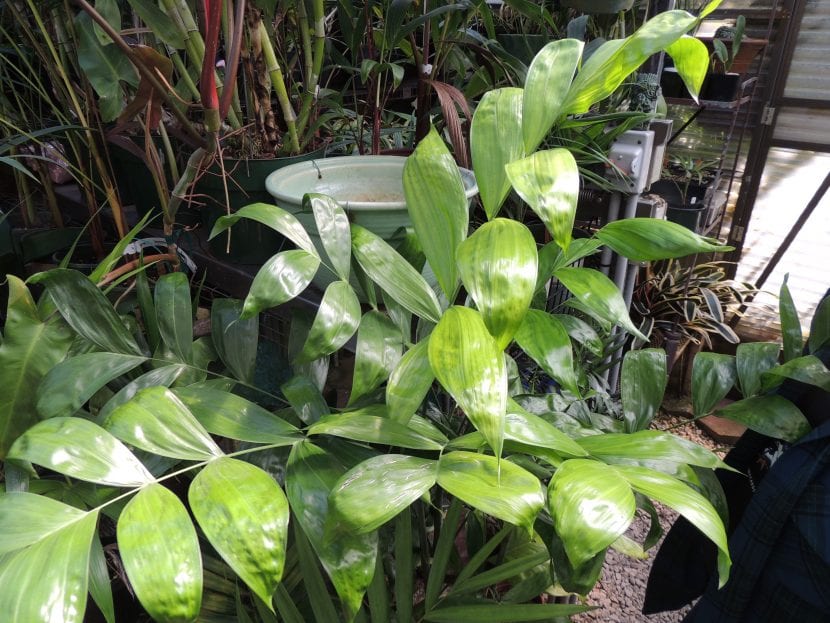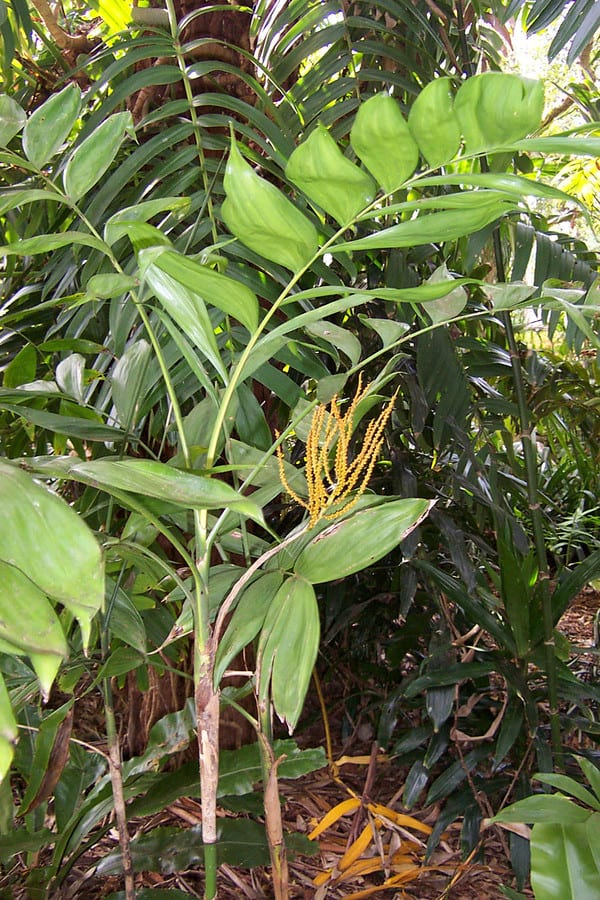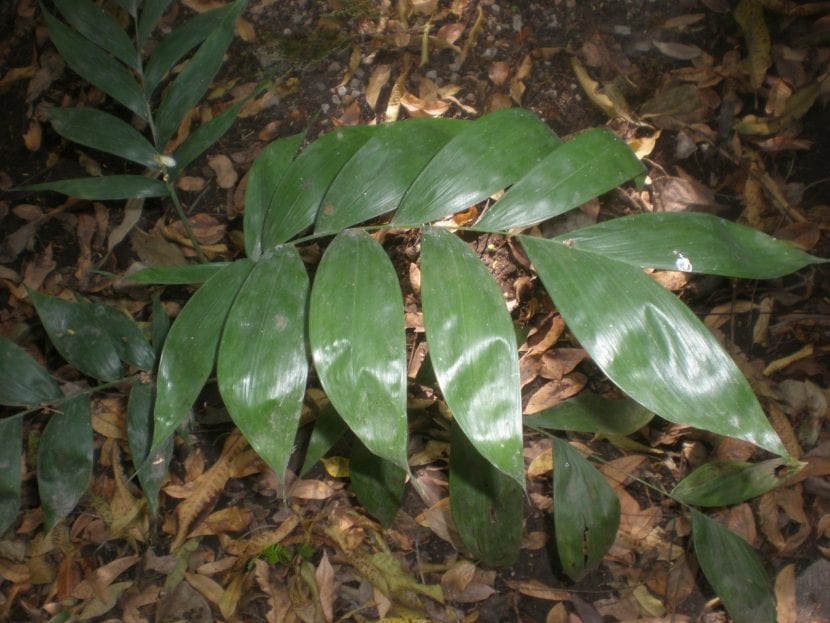
Image - Pinterest
You probably know the living room palm tree, whose scientific name is Chamaedorea elegans, and perhaps to the C. metallica, which has some very nice bluish colored leaves. But the genus is made up of many other species that, although they are much less known, are just as decorative ... and maybe even more, as is the case with our protagonist.
With a maximum height of about 3 meters, the Chamaedorea oblongata is a palm tree that can be used both to decorate the home and the garden, since it is able to resist soft frosts. Do you dare to discover it?
Characteristics of the Chamaedorea oblongata

Image - Pacosa.org.au
This palm, known as caquib, male xate, tepejilote, palmilla, mountain palm, brillosa, palmita, chate or pacayita, is native from Mexico to Nicaragua. It is formed by a solitary, erect trunk that reaches a maximum height of 3 meters and a thickness of 2.5 cm in diameter.. It has about 3-8 pinnate leaves, up to 1 meter long, and dark green in color.
The flowers are grouped in inflorescences up to 40cm long, and are solitary. Once they are pollinated, the fruit begins to mature, which will have an ovoid-ellipsoidal shape and will measure about 14mm long by 8mm wide.
How do you take care of yourself?

Would you like to have one? If so, do not hesitate to look for it in an online store. When it arrives, we recommend you take care of it as follows:
- Location: outside in semi-shade; indoors it has to be in a room with plenty of natural light.
- Soil or substrate: it is not very demanding, but it is important that it has good drainage and is rich in organic matter. If it is going to be potted, you can mix 70% universal substrate with 30% perlite.
- Irrigation: two or three times a week in summer, and every 5-7 days the rest of the year.
- Subscriber: from spring to early autumn, it must be paid with a fertilizer for palm trees following the indications specified on the package.
- Planting or transplanting time: in spring.
- Rusticity: withstands cold and frosts down to -2ºC.
Did you know the Chamaedorea oblongata?